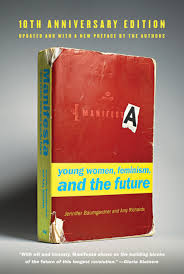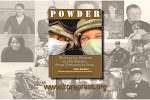I recently blogged about hooking up at the newly launched Ms. Magazine Blog. I end the piece by saying that when it comes to sex:
Reducing sexual harms like assault, coercion, and slut shaming means maximizing sexual pleasure. Let’s kick forced power disparities and nonconsensual objectification out of our everyday lives in the bed and beyond. That’s when the girls will really go wild. On our own terms.
Writer-artist Karen Henninger wrote me to say she’d love to share some insights, experiences, and history about hooking up. It seems Karen and I don’t quite see eye to eye on the issue of casual sex among consenting adults. So, in keeping with the theme, I thought it would be cool to — yes — hook-up across blogs to keep the conversation lively. With that, I introduce our Girl W/Pen guest blogger who writes the following:
Are you aware that the Women’s Movement at the turn of the 20th century started with the idea of Free Love?
Free Love goes beyond “sex without commitment.” In the late-1800s the issue included marriage, women’s lives, and freedom from government control. Since the 1950s, especially, there has been success moving toward free love rather than forced love. But we won’t even know what is possible until we are given political freedom to live as we choose when it comes to sexuality and love.
I am for Free Love and Free Sexuality but this requires treating people without harm. I watch others go down the same old patriarchal road in their relationships over and over while I scratch my head thinking, Wow, there’s another way that is so much better for everyone.
No only is love free, but it is abundant. Love can’t really exist if it isn’t free. What makes hooking up harmful is the way it is done. The same goes for marriage and everything in between. Harm comes from the abuse of power and control. Love is simply freedom from harm. Yet harm is so entrenched in our everyday lives that we see it as normal. And then activism becomes necessary to experience something different.
Karen Henninger is a visionary visual artist, writer, and independent scholar. She holds a degree in Letters, Arts and Sciences from Penn State University and a Related Arts degree with concentrations in English and Women’s Studies from Kutztown University.

 Jennifer Baumgardner and Amy Richards’ ManifestA turns 10, and an anniversary edition has just been released from Farrar, Straus, and Giroux. For a great retrospective, see Courtney Martin’s piece this week at The American Prospect,
Jennifer Baumgardner and Amy Richards’ ManifestA turns 10, and an anniversary edition has just been released from Farrar, Straus, and Giroux. For a great retrospective, see Courtney Martin’s piece this week at The American Prospect, 








 I loved reading
I loved reading  What a serendipitous day for feminism this is turning out to be.
What a serendipitous day for feminism this is turning out to be.